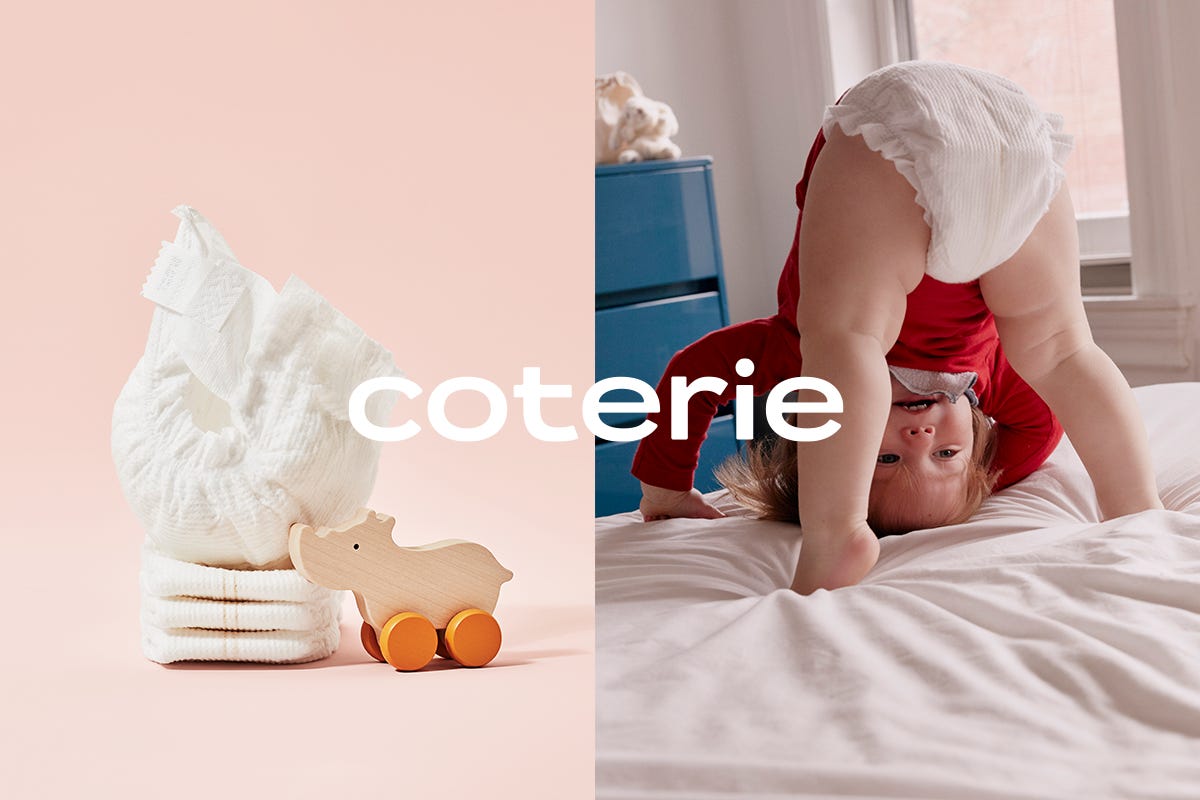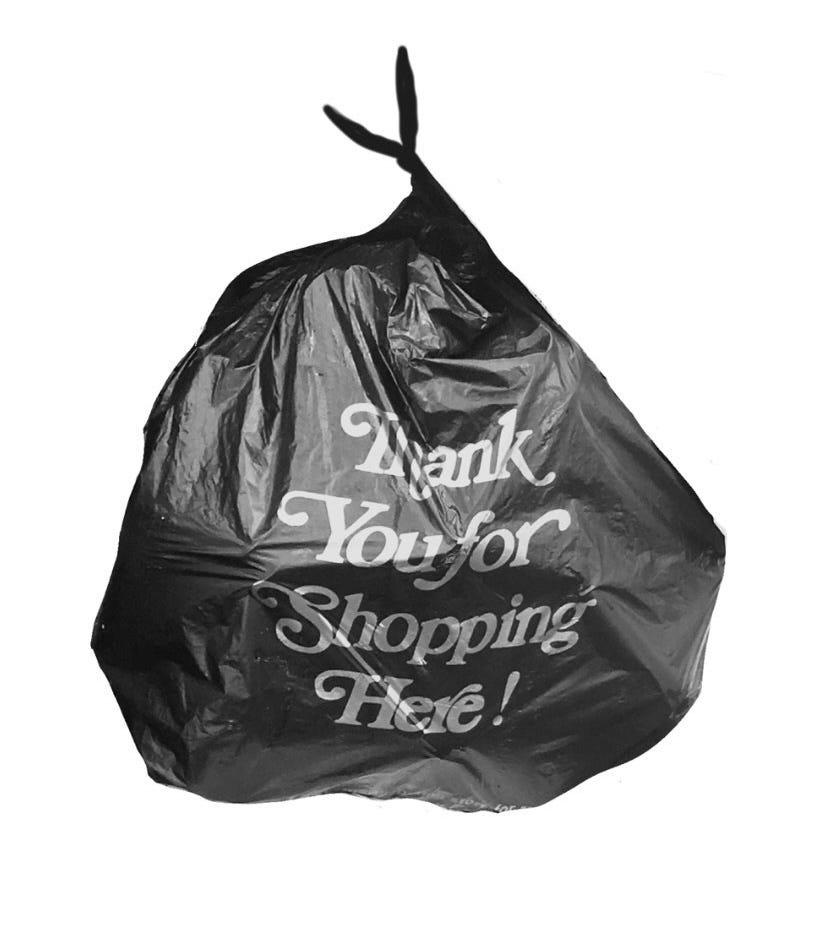This is the latest in our Brand Analysis series, in which we analyze a brand for every letter of the alphabet. Previous installments include A is for Anbernic and B is for Balenciaga. If you have a brand you’d like us to analyze, drop us a note at info@nemesis.global
Disposable diapers are one of history’s true technological disruptions, in which the new thing almost completely killed the old one.
As this Edana report on the history of disposable diapers explains: “Disposable diapers rapidly overtook cotton diapers in country after country around the world during the period between the late 1960s and the late 1980s. By the end of the period, the replacement of cotton diapers was virtually complete across Europe and America and well under way in Latin America and Asia. The rate of substitution occurred with a swiftness and on a scale having few parallels in business history: the replacement of analog by digital formats in communications and media; of typewriters by personal computers; of multipurpose household soap by synthetic detergents; of wireline telephones by cell phones.”
The first phase of development happened mostly in Europe – the commercialization of inexpensive one-piece diapers in the 1960s and 1970s – and the second phase occurred in the US, when thin and absorbent Pampers and Huggies were born. Finally, Japan entered the chat in the 1980s with the development of ultra absorbent material – which is what ultimately inspired founder Frank Yu to create Coterie diapers a few decades later.
Coterie is one of the most expensive – and most controversial – diaper brands on the market. On online forums, in the line to the bathroom, parents keep asking each other: are they really that much more absorbent than the regular variety? Are they softer? Fewer blowouts? Is it true that babies who wear Coterie never get diaper rash? Do parents who buy Coterie sleep through the night, or at least longer than those who use Pampers or Huggies? What do they dream of?
Other parents are convinced the company has stealthily changed its material in recent redesigns, or that they’re in fact worse than a regular diaper, and these suspicions take on a paranoid tenor. The price is high, around $.50 per diaper – about twice as expensive as a regular diaper – similar only to Kudos and Healthy Baby (Healthy Baby also sells a Merino-wool outer cover for a cloth diaper for $75).
Emily is a new parent and experimented with Coterie. Her newborn baby wore $10 worth of Coterie diapers in one day, which would add up to $3650 per year…roughly the same price as an Equinox membership and slightly less than a year of Soho House. The high price is a feature, not a bug – it’s one very obvious brand lever in positioning Coterie as a luxury status symbol. As we mentioned in our recent Brands after Vibes essay, parenting is a key contemporary theater for luxury. Coterie is like Artipoppe, or Bugaboo, or private school, but on a baby’s dirty bottom.
But Coterie is not merely luxury in the generically European, official sense of the word. It’s specifically a millennial-coded American DTC subscription luxury. The blue sans serif logo is indistinguishable from Casper’s. The continuous scroll site is coded with the same frictionless logic that made Warby Parker or Harry’s razors "obvious alternatives" to their Gen X counterparts.
The site is product obsessed, with an exploded axon, demonstrating just how much technology can be packed into a single diaper. Having turned its consumers into adult babies, DTC branding now turns to actual babies as the final frontier.
Yet emphatically, Coterie speaks to the parent’s experience, not the baby’s. “Upgrade your diapering routine”. It’s not about the diaper itself, it’s about you and your diapering experience and how it relates to your expectations as an advanced consumer.
This is how the story goes. The founder of Coterie, Frank Yu, was a childless LSE grad who supposedly encountered some ultra-absorbent Japanese diapers and asked himself the million dollar question: why don’t we have these in the states? (It reminds us of a former colleague who started a millennial-branded company in the gardening space. “I don’t care about plants,” she said, “but people are obsessed with living things.”) A friends and family round followed, plus a crucial mentorship with diaper don Carlos Richer of Diaper Testing International, who helped Yu replicate the Japanese fabrication. An emergency round of institutional funding and the installation of a subscription model followed the COVID-related diaper shortage of 2020. In 2023, the company surpassed $100 million in revenue.
The subscription model is a particular point of contention among those parents prone to doubting Coterie.
From Reddit:
“They lure you into a subscription with a 10% discount but then they don't deliver the next shipment on time, and you're SOL if you need more diapers before your scheduled shipment date. In our first month, I realized we were going to run out before the first 4 weeks was up (that's the default since they claim you're getting a month's worth of diapers), and I moved our shipment date from February 4th up to February 1st (which was the soonest they'd allow--this was the third week of January). They didn't ship my diapers until February 6th, not even meeting the originally scheduled date. We had run out for the week leading up to that and had no way to expedite or get the Coterie diapers sooner. Customer service was no help and took a couple days to respond to my inquiry about why the shipment hadn't gone out yet. You have to buy a month's worth of diapers at a time. This doesn't make sense for newborns who are growing so quickly! If you need to move up to the next size in the middle of the month, you've wasted about $40, and you'll have to use other diapers that are available locally while you wait for Coterie to ship the diapers to you.”
But perhaps this is the point. For the people who can afford Coterie, it doesn’t matter if you waste a pack of diapers. It doesn’t matter if your kid grows out of them and you have a bunch left over. The price difference is meaningless. It’s pennies to you. What’s more, diapers are literally trash in the making. Coterie is just expensive trash. It’s the nicest trash on the market…
Frank Yu is no longer CEO of Coterie; now it’s the more cosmetically appropriate Jessica Frenchman Jacobs, former head of brand. Jacobs recently shed more light on the Coterie approach, explaining to Modern Retail that diaper brands usually had a “ ‘goo goo, gaga aesthetic’,” whereas Coterie’s marketing is ““parent-centric” — such as showcasing how fewer leaks means better sleep…Sleep is everything…Not just for the baby, but for you to show up as a parent and be your whole and best self for that new baby, being well-rested or as rested as you can possibly be.” Sleep is at the core of DTC culture and its Casper-based history. Luxury sleep is at the core of contemporary luxury more generally (see: the oura ring, Hastens, Whoop, premium lounge sets, etc.). Perhaps the next wave of luxury will be luxury fertility. (We have more to say on the health and fertility industrial complex in future analyses, so stay tuned).
Sleep is emotional and subjective, disrupted by so many things. Baby and sleep together is a huge market (a convergence). Sleep status, the sense that some people have more access to sweet sleep and the time it takes to get it and keep it, is a new luxury brand lever.
Disposable diapers ended up appealing not only to the posh customers their developers originally imagined but also the poorer parents globally with less infrastructure for dealing with the mess of cloth diapers. This dynamic is funnily enough embedded in the brand name, which is of course very different from something like Huggies, Pampers, or Happy Baby. As the Coterie site writes, “Join our Coterie. A ‘coterie’ is a group of people with a shared passion—ours is designing the best diapering solutions on the market. If we have that in common, take a look at our open roles.”
Coterie is an interesting brand name because it sounds "fancy and French" to a contemporary ear, nods to exclusion, and is definitely a grown up word, rather than a baby word. But the etymology is actually from feudalism, and refers to an organization of peasants holding land from a feudal lord (14c.), from cotier "tenant of a cote" (same root as cottage). The coterie were the cucks, not the masters. Ironically enough, the contemporary consumer now pays endless subscriptions to these various brands, a new practice that has its own resonance with feudalism. And somewhat poetically, the diapers share their name with the very posh Coterie Senior Living, with locations in SF’s Cathedral Hill and New York’s Hudson Yards.
As the affordability crisis in the U.S. roils real estate, childcare, and elder care in particular, it’s almost as if one can squeeze out the most luxury equity by turning the screw even tighter in those same areas.
At Nemesis HQ, we can’t help but ask ourselves: is parenting the new theater of status – and thus luxury – because it’s one of the most relentless? If you think about it, what’s more superfluous than a whole other person?
Creating someone new, with their own endless cascade of needs, will always be the ultimate splurge.













Sorry, but that Reddit story about poor customer service doesn't make sense. I can attest that their CX team is the fastest, most courteous and helpful I have ever encountered. You really dug deep past the thousands of 5 star reviews to find the one disgruntled customer.
I thought this was going to be about Coterie, the fashion trade show. I'd never heard of Coterie diapers--thanks for sharing!